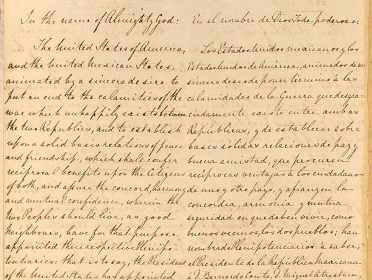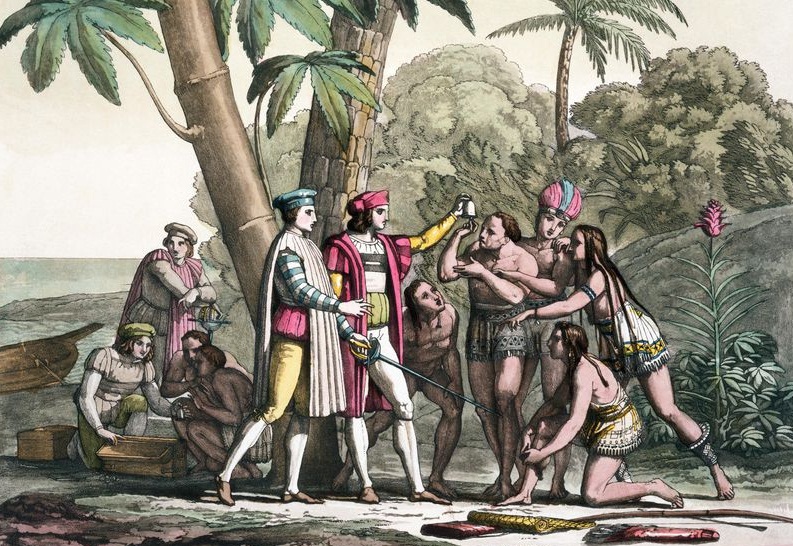The Klamath River Salmon War
Traditionally fish were an important food resource to most of the northern California tribes. Indian nations such as the Hupa, Karuk, Achomawi, and Yurok relied heavily on the salmon. Also important to some of the tribes were steelhead, sturgeon, trout, and lamprey eels.

A Yurok plankhouse is shown above.

A photograph of a Hupa woman and child by Edward H. Curtis is shown above.
Traditional Fishing:
Fishing was often done by building a fishing platform on the end of a stream and then catching the salmon with a lifting net which was lowered and raised with an A-frame. The sites for these fishing platforms were privately owned. Salmon was sliced thin and then smoked-dried which preserved it for winter use. In this form, salmon was preserved for a long time.
Using weirs, nets, and traps, the Karuk were able to catch the whole winter’s fish supply in just a few days. The tail of the salmon was cut off to drain the blood. Then the head and backbone were removed, leaving two large slabs of salmon flesh which were placed on scaffolds above a small fire to be dried and smoked.
The First Salmon Ceremony:
Since the salmon were an important part of Indian subsistence, they were also important to Indian ceremonies. Many of the tribes held, and still hold, a First Salmon Ceremony to honor the Salmon-people.
Among the Karuk, the First Salmon Ceremony was a ten-day ceremony held in late March or early April at the village of Amaikiaram on the west bank of the Klamath River several miles below its confluence with the Salmon River. It celebrated the beginning of the fishing season. One of the elements of the ceremony was the “crooked immortals” – ten sacred stones which were set on top of the sweat house. During the ceremony, unburned tobacco was given to the stones as an offering.
Among the Hupa, the First Salmon Ceremony included the narration of the mythical creation and journey down the river and back. At the end of the ten-day ceremony, there would be a community feast and public fishing for the salmon would be opened.
Among the Yurok, the First Salmon Ceremony was held in April at Welkwau, a village at the mouth of the Klamath River. Prior to this ceremony no salmon caught at the mouth of the river could be eaten.


The Yurok Salmon Festival is shown above. The photos are from the tribe’s website.
The Salmon War:
In 1978, the State of California imposed a ban on sports and Indian fishing in the Klamath River estuary. The reason given for the ban was the decline in the salmon run even though the findings of the fishery biologists pointed to habitat degradation from logging and offshore commercial fishing as the cause of the decline. The result of this ban was a short-lived (as far as the media was concerned) Salmon War which pitted the tribes of northern California against both the State of California and the Department of the Interior, the federal agency which is supposed to be the guardian of the tribes.


The Klamath River and a map of the river are shown above.
Federal agents began to assert control over the Indian gillnetting fishery on the Klamath River. About 20 agents armed with billy clubs grabbed five Yurok Indians and confiscated their salmon catch. The Department of the Interior set up a Court of Indian Offenses to prosecute the cases, however, the judge dismissed the charges and ordered the fish returned to the Indians. The Yurok informed the Department of the Interior that they planned to continue fishing in spite of the fishing ban.
In the conflicts which followed, Indian boats were rammed by federal officials and Indians arrested and jailed by heavily armed agents. In one instance, a federal agent held an Indian’s head under water until he was out of air, let him breathe, and then pushed him back under water. In another instance, an Indian woman was sexually fondled while in handcuffs.
The Yurok called for a temporary truce while the Secretary of the Interior visited the area. The Secretary had an Indian salmon barbeque without realizing that the fish for the barbeque had been illegally caught.
The Bureau of Indian Affairs, a part of the Department of the Interior, placed a moratorium on all per capita payments to the Yurok and Hupa. The per capita payments, which included timber revenues, were the sole income for many Indians.
As the salmon run tailed off in the fall, the conflicts over the Salmon War dissipated and disappeared from the media. The war was over as far as the media was concerned and they moved on to other stories. There was no real ending to this Salmon War and the Indians and their concerns for the salmon once again became invisible. An agreement reached in 2009 calls for the removal of four dams along the river which should help restore the salmon run.



